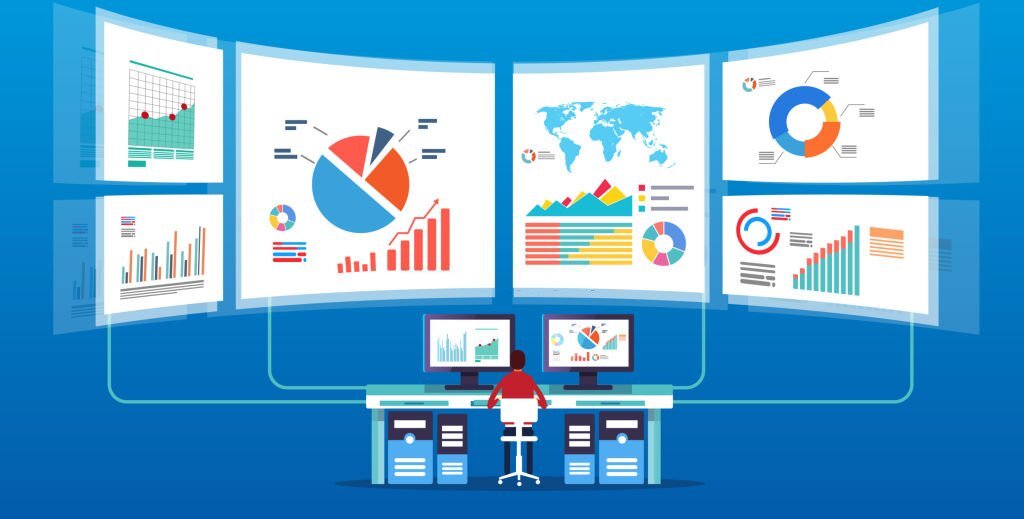Internal process simplification and the elimination of friction points across all operations using the asset management landscape are turning into competitive advantages. The effort needed to manage the physical and digital assets that workers depend on to complete their work each day is another significant operational pain point.
89 percent of customers, according to Harris Interactive, have moved to do business with a rival after a bad experience. Companies are becoming more and more aware of the direct and important influence that efficient employee-facing operations have on their capacity to provide top-notch client experiences.
Why does corporate IT asset management matter?
A system for keeping track of all the hardware and software systems in your company, including computers, routers, peripherals, cables, and more, is the basic idea. Everything of your network’s physical assets, digital possessions, software licenses, and connected mobile devices would be covered by a comprehensive system. If you have this extensive data, it will be simple to put a set of best practices into place that takes into account all the resources used by the firm.
Spending time and effort to standardize asset management increases productivity and efficiency, upskill staff, and ensures that your business is prepared to provide a distinctive client experience that meets or exceeds expectations.
Also, standardized asset management aids in transforming your company’s assets from a disorganized, segregated collection of duties into a successful, integrated part of business operations. With this integration, friction is reduced and your team’s execution of all objectives that enhance the customer experience is improved.
What advantages does standardized asset management provide?
Here is how standardized asset management, a result of internal process improvements, improves client experiences.
Quick issue response is ensured by updated IT asset information:
Managing employee tickets is significantly simpler and more effective if your company has a structured information system with correct, up-to-date hardware and software information. Employees may rapidly go back to their primary duties when there is a single source of truth for all of their assets.
Similarly, by integrating the management of hardware contracts and digital assets into your system, you can make sure that crucial hardware and software applications are constantly compliant, covered by warranties, and in the best possible condition to support your customer service efforts.
The software tools you use to send client requests or gather data from various sources must always function, and there is no chance that they may disrupt operations due to compliance problems, which is another benefit of actively checking to license. Thus, IT hardware asset management inspires trust in your customer service agents since they are well-equipped to deal with client concerns.
Less downtime and safer data result from well-maintained assets:
Make sure your hardware equipment is in top condition to deliver excellent customer service. Operations can be hampered and eventually have an effect on consumers on devices that are more susceptible to malware infection, component failure, or network misunderstanding. Furthermore, you run the danger of losing important data if such an incident occurs.
Maintaining guidelines for device maintenance and repair is made easier by using asset lifecycle management solutions for hardware. A comprehensive system would involve planning the upkeep of important hardware assets following the standards and best practices established by your IT staff.
Your IT staff can also give you maintenance manuals, checklists, and recommendations for asset servicing as your hardware assets are significant IT investments. All of these resources may be organized for simple access. Proper maintenance of your hardware assets will lengthen their useful lives and reduce the possibility of unplanned downtime that might interfere with customer service or result in the loss of crucial client data.
Standardized procedures increase productivity:
Your staff will probably spend a lot of time working out the processes themselves if your company does not establish procedures for its IT activities. This not only puts employees at risk for mistakes, but it also gets them bogged down in IT issues and diverted from their main duties.
Use an efficient system that incorporates standardized procedures for incident management, configuration management, endpoint security management, and IT asset management to prevent this. By providing standard operating procedures, you will enable your staff to solve simple problems without the aid of an IT professional. Standardized procedures also aid in reducing asset theft and loss, which lowers overall expenditures.
Standardized asset management reveals useful information:
A further advantage of tracking your software and hardware asset utilization statistics for compliance is that it serves as the foundation for useful insights. Understanding which hardware and software provide the greatest performance and customer service, which vendors are most dependable, and which assets to acquire for longer lifespans are a few of these.
You can plan for budgets and forthcoming purchases by keeping track of asset data. This way, you will never have to stop working or wait for a new gadget or piece of software since you will always be aware of when one is required.
You may also like
-
Latest Technology: Why Are Mobile Games Changing the Way We Interact with the Digital World?
-
The Evolution of Storytelling in Video Games: From Pixels to Immersive Narratives
-
10 List of the Cheapest and Best Curved Type PC Monitors in 2024
-
The Role of Regulation Technology (RegTech) in Monitoring Online Color Prediction
-
How to Navigate Google Maps Transit Directions

